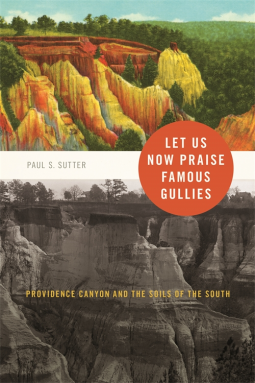
Let Us Now Praise Famous Gullies
Providence Canyon and the Soils of the South
by Paul S. Sutter
This title was previously available on NetGalley and is now archived.
Send NetGalley books directly to your Kindle or Kindle app
1
To read on a Kindle or Kindle app, please add kindle@netgalley.com as an approved email address to receive files in your Amazon account. Click here for step-by-step instructions.
2
Also find your Kindle email address within your Amazon account, and enter it here.
Pub Date Dec 15 2015 | Archive Date Dec 01 2015
Description
Providence Canyon State Park, also known as Georgia’s “Little Grand Canyon,” preserves a network of massive erosion gullies allegedly caused by poor farming practices during the nineteenth century. It is a park that protects the scenic results of an environmental disaster. While little known today, Providence Canyon enjoyed a modicum of fame in the 1930s. During that decade, local boosters attempted to have Providence Canyon protected as a national park, insisting that it was natural. At the same time, national and international soil experts and other environmental reformers used Providence Canyon as the apotheosis of human, and particularly southern, land abuse.
Let Us Now Praise Famous Gullies uses the unlikely story of Providence Canyon—and the 1930s contest over its origins and meaning—to recount the larger history of dramatic human-induced soil erosion across the South and to highlight the role that the region and its erosive agricultural history played in the rise of soil science and soil conservation in America. More than that, though, the book is a meditation on the ways in which our persistent mental habit of separating nature from culture has stunted our ability to appreciate places like Providence Canyon and to understand the larger history of American conservation.
A Note From the Publisher
Part of the Environmental History and the American South series
Part of the Environmental History and the American South series
Part of the Environmental History and the American South series
Advance Praise
—Donald Worster, author of A Passion for Nature: The Life of John Muir
“In this sweeping and powerful environmental study, Paul Sutter uses
Georgia’s Providence Canyon both as a cautionary tale of erosion and the
opportunity to explore soil science, geology, southern farming
practices, misguided experts, and boosters’ fantasies of marketing the
mammoth gulley as a lesser Grand Canyon.”
—Pete Daniel, author of Toxic Drift: Pesticides and Health in the Post–World War II South
Available Editions
| EDITION | Other Format |
| ISBN | 9780820334011 |
| PRICE | $34.95 (USD) |



